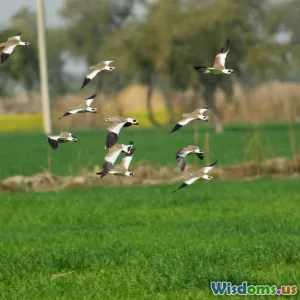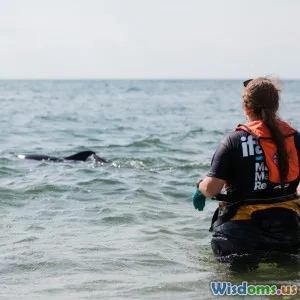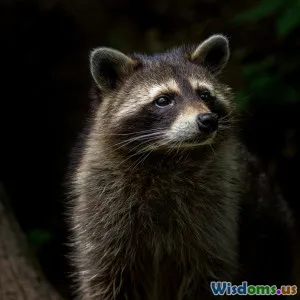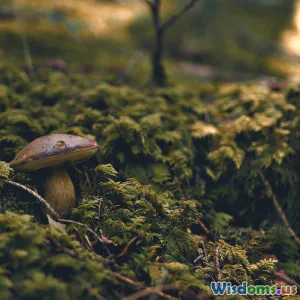
Reducing Pesticide Use Protects Birds More Than You Think
9 min read Explore how cutting pesticide use can profoundly safeguard bird populations and their ecosystems, revealing unexpected benefits beyond pest control. (0 Reviews)
Reducing Pesticide Use Protects Birds More Than You Think
Pesticides, heralded for their role in modern agriculture, are a double-edged sword. While they control crop-dominating pests, their uncontrolled use is silently decimating bird populations worldwide. Many people underestimate how drastically pesticide reduction can protect birds—not just the obvious harm from toxins but also the rippling effects across ecosystems. This article unpacks the layers of impact pesticides have on avian life, showcasing why cutting pesticide usage is one of the simplest yet most profound conservation actions.
The Invisible Crisis: Pesticides and Bird Decline
Over the past 50 years, global data paints a grim picture. According to a 2019 study published in Science, the United States has lost nearly 3 billion birds since 1970—almost 30% of its total bird abundance. And pesticides have been implicated multiple times as a major causative factor.
How Pesticides Harm Birds
Pesticides affect birds in multiple, often compounding ways:
- Direct Toxicity: Birds may ingest pesticides through contaminated seeds, insects, or water. Neonicotinoids, for example, have systemic properties making plants themselves toxic.
- Food Chain Depletion: Pesticides drastically reduce populations of insects and other invertebrates, which many bird species depend upon, especially chicks.
- Habitat Degradation: Repeated pesticide application alters soil chemistry and plant communities, shrinking safe foraging and nesting habitats.
A 2015 research from Environmental Science & Technology showed that neonicotinoid insecticides correlate strongly with declines in insectivorous birds such as warblers and sparrows.
More Than Just Poison: The Ecological Domino Effect
Reducing pesticide use doesn’t just reduce poisoning risks; it helps restore ecological balances vital for birds’ survival.
Reviving Insect Populations
Insects constitute around 80% of the bird diet during breeding seasons. Massive insect declines—sometimes termed the "insect apocalypse"—threaten food availability. For example, the iconic European swifts feed almost exclusively on flying insects caught in mid-air, and reductions in aerial insect abundance can lower reproductive success.
By cutting down pesticide dependency, insect populations recover. In Germany, an agricultural initiative that restricted neonicotinoid use in several regions saw a subsequent rise in local insect abundance, which benefitted insectivorous birds like the European robin and great tit substantially.
Protecting Nesting and Roosting Habitats
Many pesticides damage not only target pests but beneficial plants and microbes critical for maintaining healthy habitats. When pesticides leach into soil or waterways, they disrupt microorganism communities that support plant growth, which in turn affects the shrubs and trees birds use for nesting and roosting.
In Ontario, Canada, fields managed with reduced pesticide applications demonstrated increased native wildflower presence. This led to higher bird survey counts, a clear relationship between plant health and avian presence.
Case Studies: How Reduced Pesticide Use Revitalized Bird Populations
1. The Farmland Bird Recovery in the United Kingdom
In the UK, farmland birds like the skylark and yellowhammer were crashing due to intensive pesticide-dependent agriculture. The UK government initiated agri-environment schemes encouraging farmers to reduce pesticide use and diversify crops.
From 2008 to 2018, bird census data illustrated localized uplifts—skylark populations rebounded by 15-20% in participatory farms. These increases correlated with healthier insect populations and greater weed biodiversity directly linked to limited pesticide application.
2. Raptors Rebound with Reduced Rodenticide Use in the U.S.
Rodenticides, a subset of pesticides targeting rodents, cause secondary poisoning in raptors, such as hawks and owls, when they consume contaminated prey. In California, campaigns to limit second-generation anticoagulant rodenticides led to marked raptor population recoveries. A 2017 Biological Conservation study recorded a 25% decrease in rodenticide residues in sampled hawks.
3. Organic Farming’s Success Story
A 2021 meta-analysis in the Journal of Applied Ecology confirmed that bird diversity and abundance are significantly higher in organic farms that avoid synthetic pesticides and herbicides compared to conventional systems. Organic farming practices boost insect density and plant diversity, providing better food and shelter.
Balancing Agriculture and Bird Conservation: Practical Solutions
Reducing pesticide use doesn't mean abandoning modern agriculture. Instead, integrated and nature-based approaches are key.
Integrated Pest Management (IPM)
IPM combines biological controls, crop rotation, habitat management, and minimal chemical use as a last resort. For instance, farmers can promote natural predators like ladybugs and parasitic wasps that naturally control pests, reducing chemical dependence. The Food and Agriculture Organization (FAO) asserts that widespread IPM adoption could lower pesticide use by 30-50% globally while sustaining yields.
Buffer Zones and Wildlife-Friendly Practices
Establishing pesticide-free buffer zones with native vegetation next to fields offers birds refuge and increased insect availability. These buffer zones also act as natural filters, reducing chemical runoff into waterways.
Policy Measures and Education
Government regulations restricting harmful pesticides encourage safer alternatives. The European Union’s partial ban on neonicotinoids was motivated largely to combat pollinator and bird declines. Supporting farmers through subsidies and extension programs to adopt bird-friendly practices improves compliance.
Taking Action: What Individuals Can Do
- Support organic and bird-friendly-certified products. Choosing these encourages sustainable farming.
- Create pesticide-free gardens to serve as mini havens for birds and insects in urban zones.
- Advocate for local policy changes promoting reduced pesticide use and wildlife-friendly farming.
- Educate peers about the cascading impacts of pesticides on ecosystems.
Conclusion: The Far-Reaching Impact of Pesticide Reduction
The link between pesticide use and bird population declines is both severe and nuanced. It encompasses direct toxicity, loss of food resources, and habitat degradation—threatening not just birds but entire biodiversity.
Cutting back pesticide use reverberates beyond immediate pest control benefits. It rehabilitates ecosystems, enriches biodiversity, and restores the delicate balances essential for our feathered friends to thrive. As stewards of the environment, embracing reduced pesticide practices through policy, farming innovation, and personal choices stands as one of the most impactful ways to safeguard bird populations—more than many of us realize.
The call to action is clear: by changing how we manage pests, we protect the wings of nature that enrich our world in immeasurable ways.
References:
- Rosenberg, K.V., et al. ‘‘Decline of the North American Avifauna.’’ Science, vol. 366, no. 6461, 2019.
- Mineau, P., & Palmer, C. ‘‘The Impacts of the Nation’s Most Widely Used Insecticides on Birds.’’ Environment Canada, 2013.
- Seibold, S., et al. ‘‘Arthropod decline in grasslands and forests is associated with landscape-level drivers.’’ Nature, 2019.
- Geiger, F., et al. ‘‘Persistent negative effects of pesticides on biodiversity and biological control potential on European farmland.’’ Basic and Applied Ecology, 2010.
- FAO. ‘‘Integrated Pest Management: Principles and Practice.’’ 2020.
Rate the Post
User Reviews
Other posts in Sustainable Agriculture & Wildlife
Popular Posts















